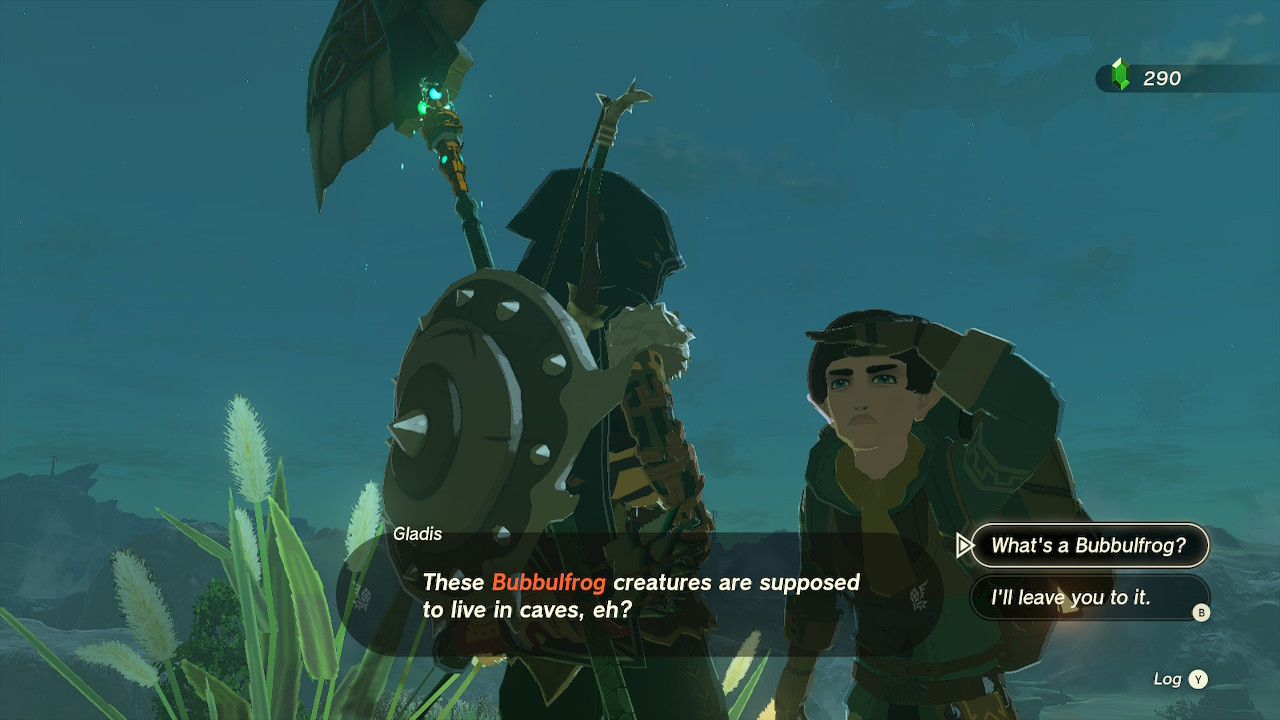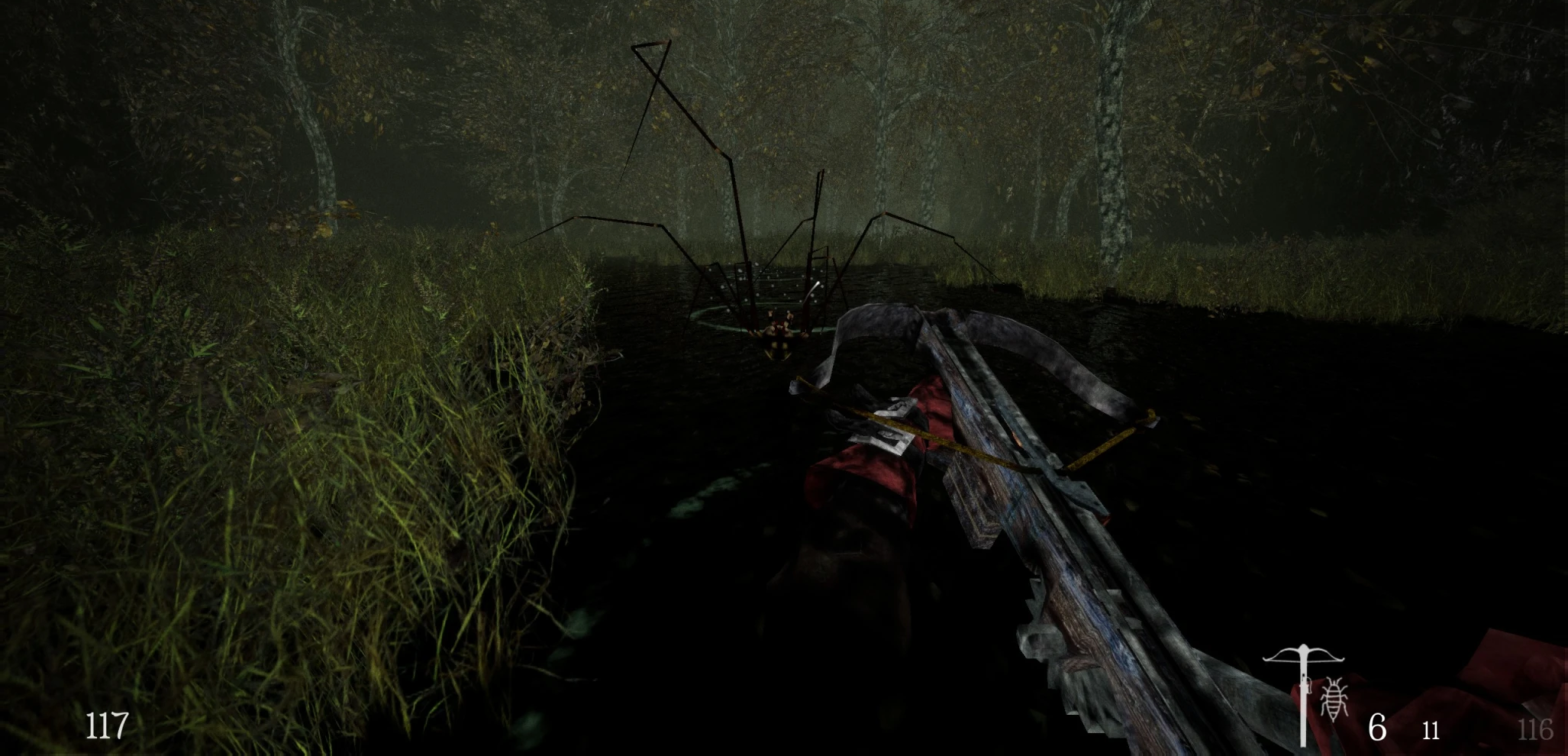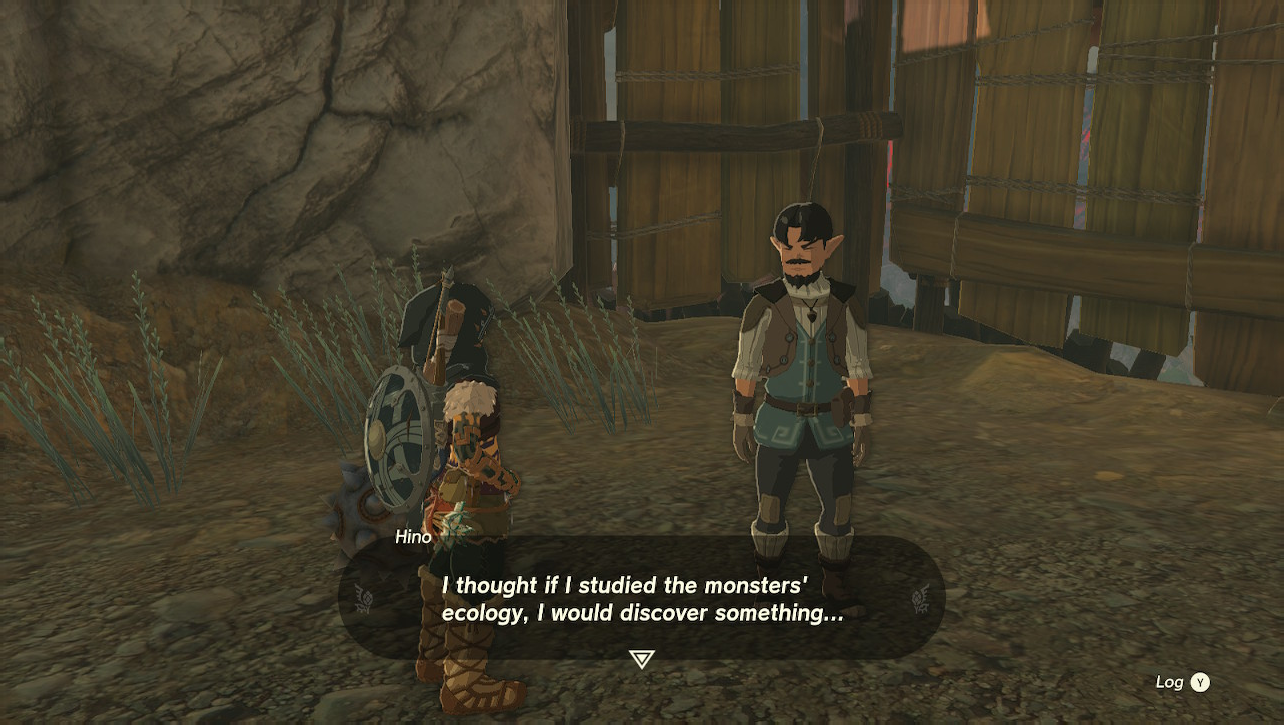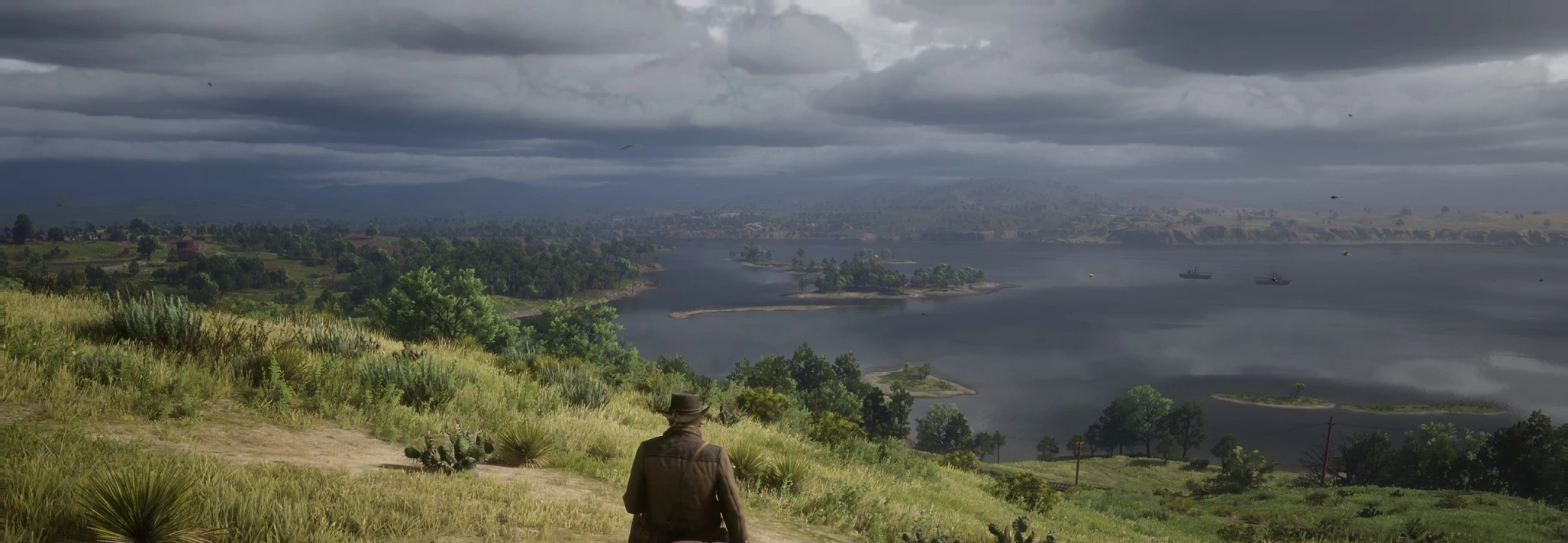Mini-cology Reviews: Northern Journey, Zelda, and Read Dead 2

In which I briefly review a few games I can’t finish full blogs for.

Northern Journey
There is a game, a sort of quirky anomaly: an expressive 3d world steeped in local folklore, displaying an astounding subtle variety of plants and fauna across a every imaginable elevation in Norway. One with sophisticated outdoor level design that centers naturalistic landscapes tied sporadically together with ropes and bridges and ruins as a result of humanity’s attempts to live with it. One that… plays like a fantasy quake where you sling rocks at spiders for most of the runtime. This game is Northern Journey.
The eponymous Journey has a sublime logic to it: follow the water. From the sea, the player treks upwards through stumbling falls, midland bogs, and time-frozen mountaintop, delving increasingly abyssal lows to break up the pacing and finish it off. Its scope and understanding of water is uncanny, as if each level was framed around what the water was doing to begin with.
Percolated within are many insects. Is there a more perfect enemy in an FPS than insects? They have not only the variety and horde-like quantity required for the genre, but this portrait of their antagonism perfectly frames an ecological conflict as old as time, that of mammal against bug blown up to epic proportions. They are as natural an enemy as can be, perfectly acceptable to swat, and provide a honest resistance to the game’s environments that feels true to life’s experiences of trying to cross a bog or avoid ticks in the forest.
You can tell that Northern Journey‘s developer owes a lot of respect and care to the environment they live in (you would have to dearly love spiders to invent so many to torment the player with), and that the world lives alive in their mind and their culture. They have translated it so beautifully to a video game, and I could not recommend it more as one of the many finest I’ve ever played.

Breath of the Wild / Tears of the Kingdom
I don’t know what the Zelda games have in them to invoke such pathos from fans, to suggest there is more than there is in every entry. Is it just childhood fondness? The “Legend” in the title? The sales numbers and fathomless fandoms? Perhaps the most frustrating and relevant sentiment echoed endlessly across social media is their comparison to Ghibli movies, that they are in the same echelon of storytelling or environmentalism as Hayao Miyazaki’s works.
I understand that gamers often pin their dreams of prestiege to popular smokescreens, but Nintendo is no worthy comparison: the Switch Zeldas cannot convince me of any ecological depth (and we’ll leave the storytelling well alone). Seemingly no natural feature exists beyond the symbolic, a vague idea of Nature, each hill and canyon cursed to lie unrelated to neighboring elements. It is a given, of course, that the mountains and valleys are placed at random with no geological theme. Rivers start and end in clean stagnant lakes, never suggesting any feedback loop with the landscape, never spilling out to the surrounding sea, never giving rise to flora taking advantage of their networks of moisture. Forests can be found on the tops of hills of grass while dodging empty lakesides. It feels nonsensical to navigate with none of the rules of the natural world, frustrating on an instinctual and intellectual level.
For the specific sense of place in Ghibli’s Totoro or Kiki’s, where Japan and Sweden are painted respectfully, Zelda still insists on gesturing at a generic medieval-land with only its older incarnations as a reference: a land of green grass, brown mountains, and forests dominated by cute round apple trees.
If it sounds like a child’s painting, then am I taking it too seriously? This is the series with the Water and the Lava levels on different corners of the map. I was expressing my frustration with the world to my partner and they said “Isn’t this from the people who made Mario?” Point taken. The world is “toyetic”, if artfully wrought. A conifer is a conifer and it means we’re somewhere cold. The colors are pretty nice I suppose.
So I diminished my expectations and re-entered. What is this game? It didn’t look right on my TV, stretched blurry and fitful across the screen like butter scraped over too much bread and whatnot. A TV is for movies and TV shows, where you spend a few hours paying attention. For Zelda, this feels wrong. This is a game where you wander a few minutes and find a bite-sized activity to do, bread-crumbed until the credits roll. The world is shaped around this, and I could feel my very perspective conflict with the game’s architecture, straining to squeeze my relaxed horse-riding into a loop of 20-minute activities. Play me in handheld mode, it whispers. Just a bit every day, a shrine or a cave. Let the crying princess guide you, isn’t she nice?
A real landscapes whispers to me when I walk it, giving as much to me as the attention I give it, teaching me something or just giving me space. Zelda just takes and takes and comforts and shines, but the illusion is too easily broken.

Red Dead Redemption 2
I was one day researching the Greater Prairie Chicken, as I often do, hoping to finally see one for myself. Usually active in breeding displays from March to April in a specific region of the Great Plains, I had missed this year’s easiest opportunity and wondered just where exactly they could be found otherwise. To my surprise, many Red Dead fans were asking the same question.
If there’s a Greater Prairie Chicken in your game, I’m going to buy it. This policy has been pushed to its limits (on the very first game) with Red Dead Redemption 2, a game that opens with nothing dramatic happening for 10 hours to test if you have the patience- the maturity- to sip it like a fine wine. For this patience? A reward of subtle notes to grace the palette: shooting 5 wolves with a shotgun on top of a mountain for story reasons, rescuing a man from an attacking cougar twice in the same spot in the same hour, and a loony- tunes-esque amount of tumbling and grunting whenever Arthur tries to walk a 45 degree slope. Subtle flavors are an acquired taste, of course.
In all seriousness, the game commits reasonably well to a visual naturalism even as I loathe the sluggishness of its kineticism. The awkwardly small game world shimmers with surprising gravitas under the sophisticated atmospheric effects. The plants are generally where they should be, full of surprises and variation, but there’s something about the grasses (of which there are delightfully many) that are just the right shade of green to sell a regular mundanity, set up to be shattered into genuine splendor by catching a sunset in the right spot. All the subtleties and unexpected contrasts of realism are pulled off.
Why is the “Dakota River” like 30 feet wide? Why did they rename every real life location to some ridiculous equivalent? Why is the game so dreadfully slow about eye-rolling tropes and pointless skirmishes? If you ask me, it’s just a stupid Rockstar game that can’t really sell something worthy of real landscapes, of fine-grained symbols, for one reason or another. But any game where I can see a bison, optionally hunt a bit of waterfowl, and identify a lot of plants on my (bad) knowledge of western flora is a rare wonder. At least worth poking away at.
--
(Author's note: I did eventually go back to RDR2 and find the prairie chickens. I was disappointed to find them just in the starting area, and no tin the plains. The bison are nice. The plains are smaller than my hometown.)
- ← Previous
Ecology Review: Elden Ring - Next →
Blog Reboot